See what API testing solution came out on top in the GigaOm Radar Report. Get your free analyst report >>


See what API testing solution came out on top in the GigaOm Radar Report. Get your free analyst report >>
Comprehensive, AI-enhanced API testing solutions simplify complex test case automation, elevating testing processes and empowering teams to ensure flawless API functionality, performance, and reliability.
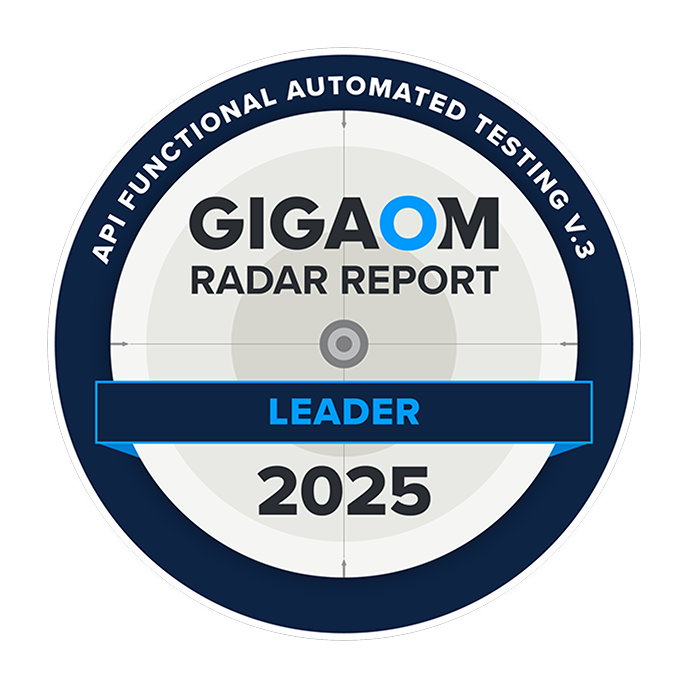
API Testing
Eliminate inefficient testing practices. Streamline testing with Parasoft’s AI-infused API testing solution for seamless test automation to elevate application quality and ensure APIs perform flawlessly every time.
Simplify the creation of intricate API and end-to-end test scenarios with AI. Codelessly craft intelligent, effective, and maintainable test cases.
With support for 120+ message formats and protocols, testers can easily validate a wide range of use cases and technology stacks.
Repurpose existing functional test cases to validate nonfunctional requirements early in the SDLC with shift-left API security and performance testing.
Seamlessly integrate API testing into CI/CD pipelines. Optimize test execution for rapid feedback on the impact of changes and enhance quality with agility.
For teams grappling with complex end-to-end test cases, AI-augmented API test creation eases the burden. Testers of all skill levels can concentrate on the core business logic and easily craft intelligent, maintainable test cases for any workflow.
With SOAtest’s built-in AI Assistant, teams can take advantage of agentic AI capabilities directly within their IDE. The AI Assistant acts as an intelligent testing partner.
Testers can ask how to perform specific tasks and receive step-by-step guidance or go further by requesting the assistant to automatically generate complete test cases. This allows new and experienced users to accelerate test creation, reduce manual effort, and deepen their understanding of what they can get done.
To unlock these intelligent interactions, SOAtest supports integration with large language model (LLM) providers, including OpenAI and Azure OpenAI deployed in clouds or local LLMs deployed on-prem. This connection lets the assistant analyze API service definition files in real time using user-defined requirement prompts and generate meaningful API scenario tests tailored to specific use cases.
The result is a faster, more intuitive approach to API testing, driven by agentic AI and designed to help teams move efficiently from requirements to executable tests.
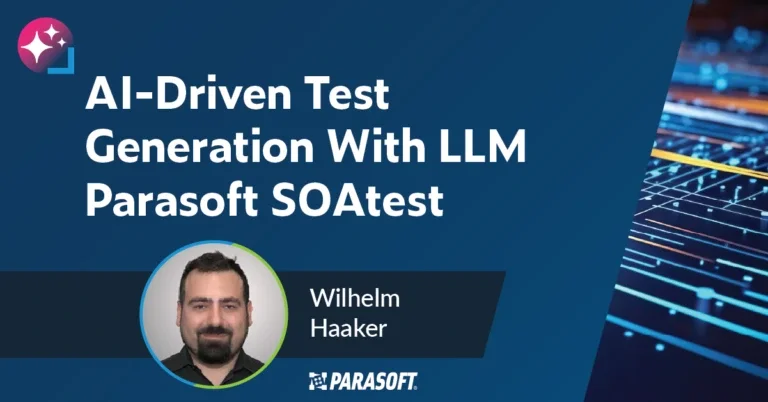
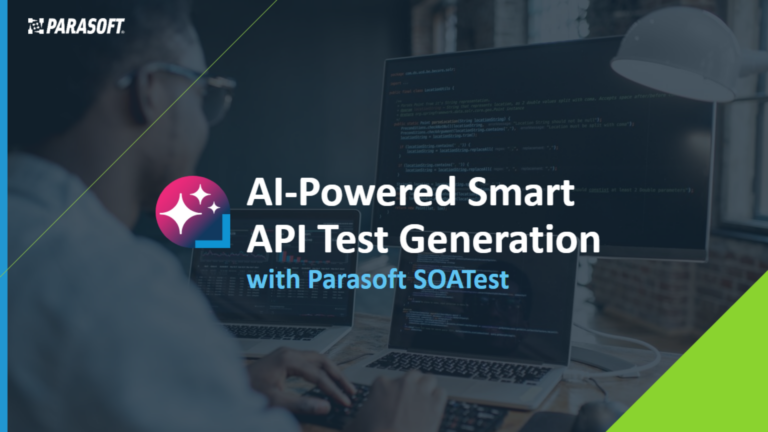
Teams can create codeless API test scenarios from recorded web UI or REST API traffic with SOAtest’s AI-infused Smart API Test Generator. The Parasoft Recorder captures API traffic from the execution of manual or automated web UI tests regardless of the test framework.
The traffic files are imported into SOAtest where its AI engine parses the traffic file, analyzing patterns to generate and auto-configure test scenarios.
The AI analyzes the flow of data across the APIs and dynamically extracts parameters from responses applying them to downstream API requests. It automatically adds relevant assertions to generate intelligent and effective test cases.
Read Blog: Record & Replay Testing »
Simplify creating complex API integration and end-to-end test scenarios. Build and execute complex test scenarios without writing a single line of code to easily ensure seamless functionality and robust performance throughout your system.
Parasoft SOAtest employs visual drag-and-drop tooling to create test scenarios without writing a single line of code. Using a robust menu of tools to extend test cases, teams can easily validate business logic across multiple interfaces like APIs, web UIs, databases, ESBs, and mobile devices.
Offering comprehensive support for testing over 120 different protocols and message formats, our solution establishes an integrated framework for end-to-end testing. Its flexible test suite infrastructure enables teams to easily add, organize, and execute test scenarios. Using SOAtest, testers can:



60%
Reduction in test creation time.
80%
Increase in API test coverage.
Enable true continuous testing workflows by leveraging API testing in concert with service virtualization and environment management to create resilient, effective, and efficient automated test cases while eliminating environmental obstacles that hinder test velocity and cause testing downtime.
Continuous testing is a process that empowers teams to build quality into software development and accelerate the delivery of high-quality customer experiences. SOAtest easily integrates into all popular CI/CD pipelines for execution, quality gates, and reporting.
Teams can optimize testing pull requests by using SOAtest’s test impact analysis to identify and run the subset of test cases required to validate the application changes. Continuously publish test results into Parasoft DTP for advanced reporting, code coverage analysis, API coverage analysis, and requirements traceability.
Leverage Virtualize, SOAtest’s sister solution, to stabilize the environment for automated testing by simulating unstable or unavailable integration and environment components. Testing teams can use Virtualize to create completely virtual test environments that can be deployed or destroyed on demand.
Read Blog: 3 Obstacles to Continuous Testing & How to Remove Them »
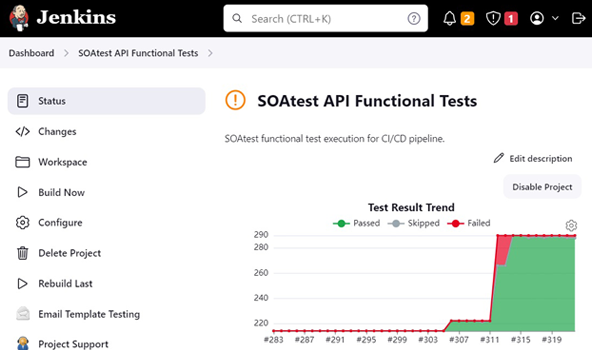
API testing for microservices ensures seamless communication between independent service components, guaranteeing reliability and scalability in distributed architectures. By rigorously performing end-to-end testing in microservices architectures, teams maintain robustness and agility, making sure microservices deliver consistent performance across diverse environments.
Microservice testing presents a complex challenge for two primary reasons.
Supporting 120+ protocols and message formats, SOAtest provides teams with rich support and flexibility to craft test scenarios for complex distributed systems.
It can be difficult to measure how thoroughly microservices have been tested due to their distributed nature. Our code coverage solution helps teams understand the sufficiency of their testing practice by capturing code coverage of Java and .NET microservices as they’re exercised by end-to-end test scenarios. Code coverage is reported for each individual microservice or aggregated for the application as a whole.
Validating modified microservices in the context of the entire application can be challenging and time-consuming. Parasoft’s test impact analysis identifies and executes the specific subset of end-to-end tests that must be run to validate changes in an individual microservice.
Read Blog: Microservices Testing Challenges »

Shift nonfunctional testing left as part of the SDLC process by reusing existing API test cases for API security and performance testing.
Use SOAtest with embedded OWASP ZAP or integrate with PortSwigger’s Burp Suite to repurpose API tests for penetration testing with ease. Teams can run security analysis for individual REST APIs or full API scenarios by selecting specific test cases and configuring them to check for vulnerabilities related to OWASP Top 10 or CWE.
Parasoft’s built-in documentation simplifies steps for testers to remediate errors reported in SOAtest. Managers and security auditors can produce detailed HTML reports that correlate violations to specific OWASP or CWE rule IDs for easy tracking.
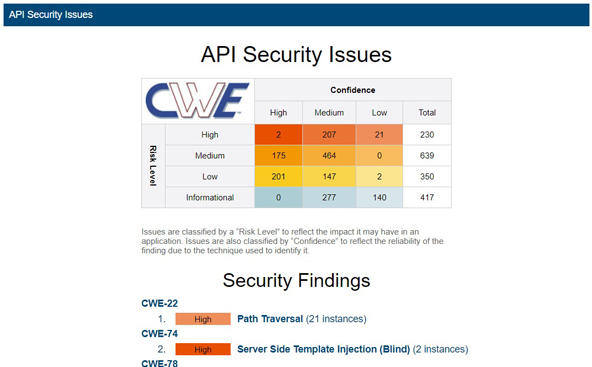

Teams can repurpose SOAtest API test cases for performance testing in a similar way.
Read Blogs:
How to Make API Security Testing an Automated Part of the CI Process »
How to Optimize Performance Testing With a Shift-Left Approach »
Test execution and test maintenance can become time-consuming as the number of test cases grows. Optimize test execution by delivering faster feedback on the impact of application changes. Streamline test maintenance with intuitive change templates and automated test case refactoring.
SOAtest’s AI-powered test impact analysis helps teams gauge what lines of code each test case executes. It automatically identifies impacted test cases when you modify code. Testers only need to execute the subset of test cases required to validate the changes instead of the entire regression test suite. They can quickly validate application changes and get fast feedback on whether the changes impacted functionality.
When API contracts change, updating the existing test cases to reflect the new schemas can be time-consuming. SOAtest’s Change Advisor helps identify test cases impacted by API changes and swiftly updates them. Change Advisor analyzes the outdated service definition file against the latest version and creates a change template that testers can apply to their entire suite of tests to automatically bulk-refactor the test cases to support the new API schemas.
Read Blog: Improving Test Execution Efficiency With Test Impact Analysis »
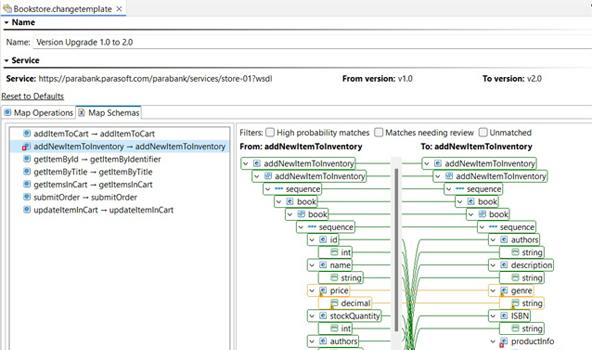
Overcome application testing roadblocks that hinder automated API testing velocity with service virtualization. Eliminate testing downtime and test failures caused by unstable or unavailable integration endpoints. Give testers control over the test environment.
Unstable and unavailable test environments often hinder the ability of QA teams to meet their goals for test velocity and automation. Service virtualization enables teams to create intelligent simulations of the components they need for API integration and end-to-end testing.
Teams can shift left testing using Virtualize to do the following:
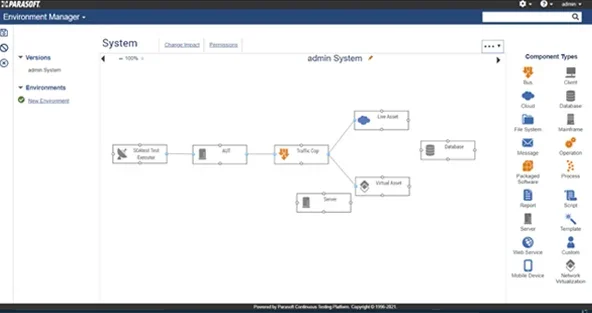


50%
Reduction in test flow cycles.
60%
Reduction of certification time.


Elevate your software testing with Parasoft solutions.